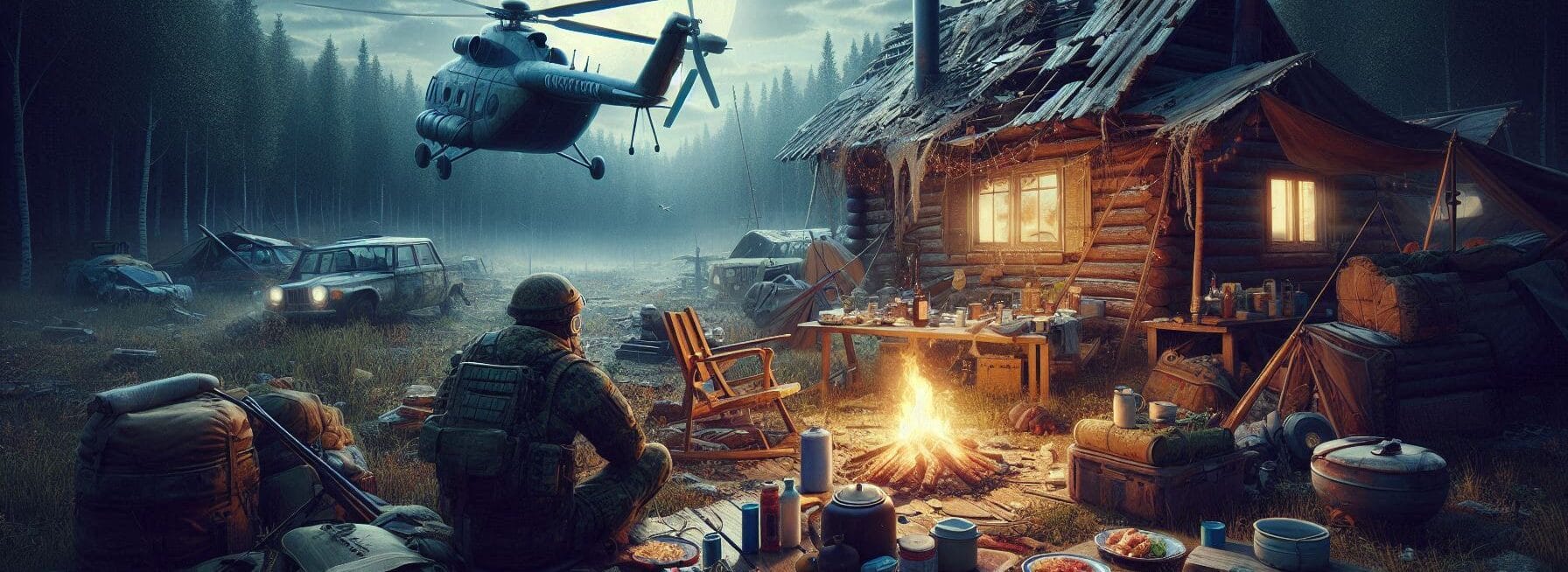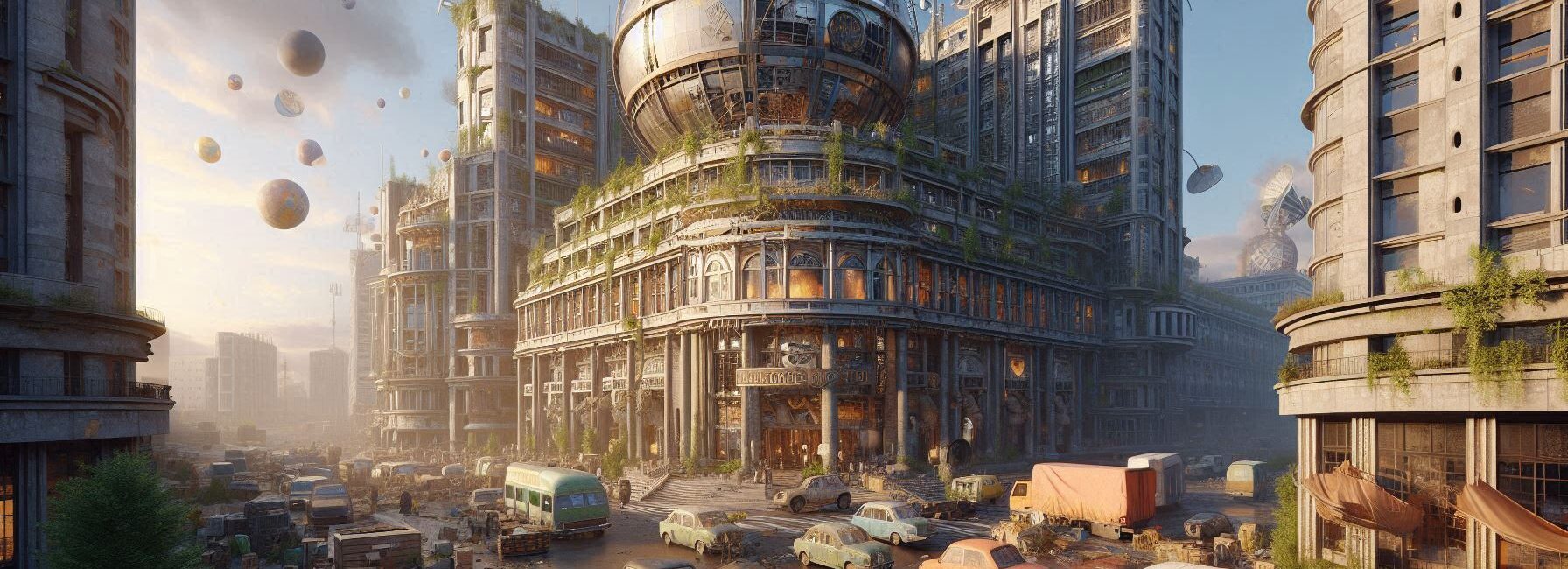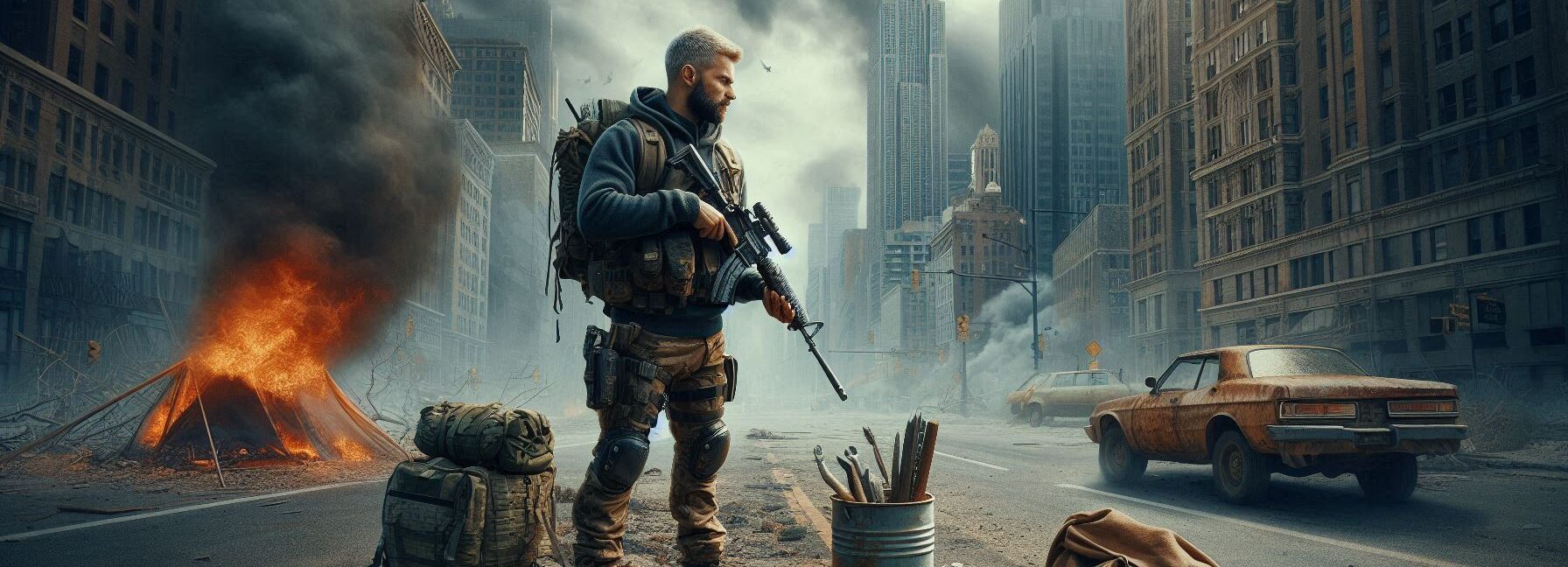Please Note: This post may contain affiliate links. If you click one of them, we may receive a commission at no extra cost to you. As an Amazon Associate, I earn from qualifying purchases.
Last Updated on October 19, 2025 by Kevin Collier
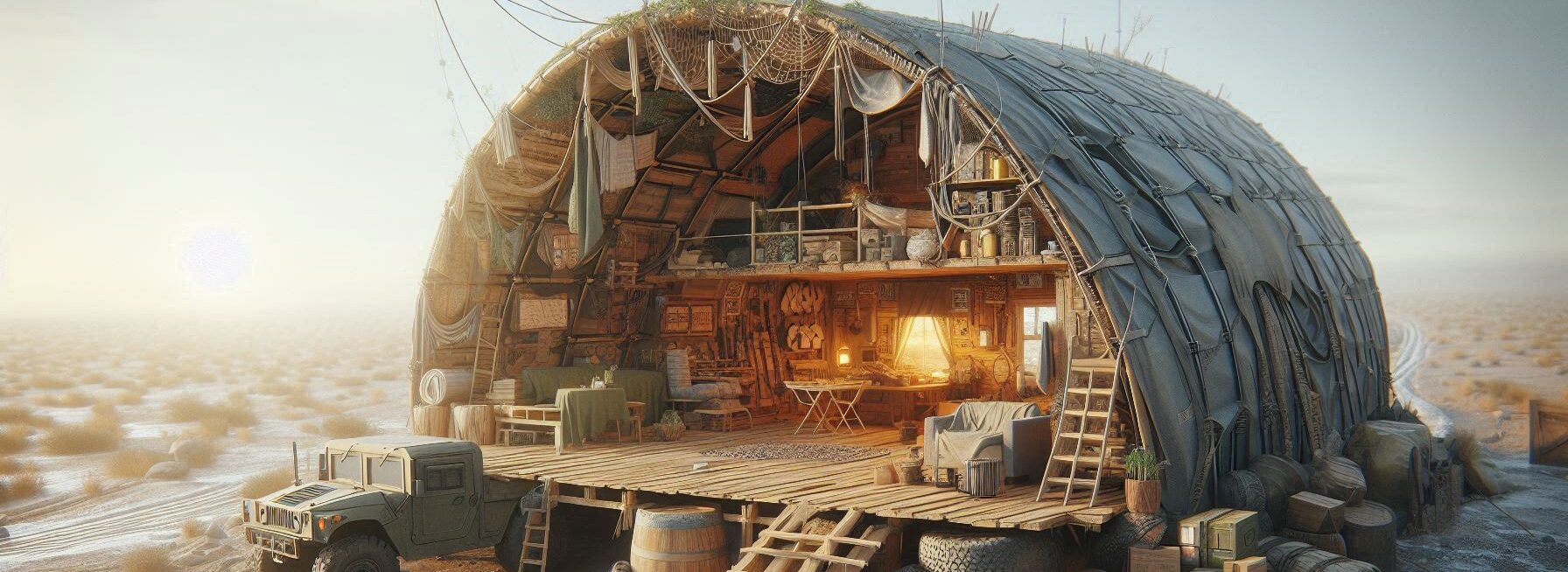
Top Takeaways and Key Concepts
– Choose a location with natural resources like water and materials for building.
– Use local, sustainable materials to construct your shelter effectively.
– Design your shelter for energy efficiency and protection against weather elements.
– Incorporate renewable energy sources, like solar panels, for long-term sustainability.
– Include space for food production, like a garden or indoor planting area.
So, here we are. The world’s a bit crazy now. Maybe zombies are trying to eat your brains (again), or folks realized they don’t need Wi-Fi to survive. Whatever’s happening, you need a cozy place to call home.
Don’t worry! With a sprinkle of creativity and some survival know-how, you can whip up a shelter that even your old self would be jealous of. Imagine it: no Wi-Fi, but a comfy haven all your own.
Think about what you have nearby. Maybe it’s some old wood, or even a few sturdy branches. Use what you find! A little searching can help you gather materials to build something solid.
Find a spot that’s safe and away from any wild critters. Look for a hill or a tree that can block the wind. You want to stay warm and dry. A little natural protection goes a long way.
Start with a frame. You could make a simple A-frame or a tiny cabin. Just lean the branches against each other, and voilà! It’s like magic. Cover it with leaves, grass, or anything to keep the rain out. Just think about a warm blanket—only for your shelter.
Now, add some cozy touches inside. Maybe bring in some dried grass for a soft sleeping spot. You can even make a little fire pit outside. It’ll keep you warm and let you cook food. Yum!
Also, check on your shelter often. Make sure it's safe and secure. You might need to fix holes or add more cover. Keeping warm is important!
Keep in mind that the purpose is to make a safe place to sleep. You want to be safe. At night, look up at the stars and, if you can, laugh with your pals. There is still fun to be had, even when things are crazy.
*** Shop for Survival Gear - Tools - Kits ***
Survival Gear - Bags and Backpacks - Knives - Boots/Footwear - Communication
Outdoor Cooking - Gloves - Hydration - Dry Boxes - Water Filtration Systems
Tents - Sleeping Bags - First Aid Kits - Multi-Tools - Flashlights - Fire Starters
Navigation - Survival Food - Night Vision - Headlamps - Stun Guns - Binoculars
So here's to making your snug hideout after the end of the world! You can accomplish this, and who knows, maybe you'll have some stories to share when everything is over. And don't forget about all the munchies you can eat by yourself! 🏡✨
Choosing the Right Location
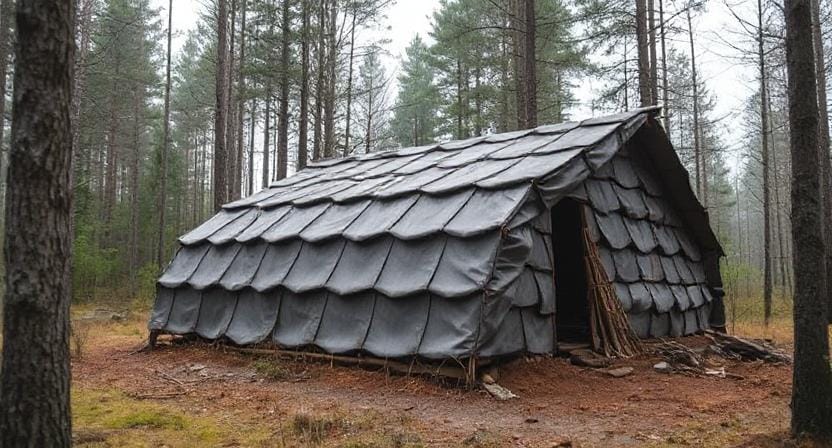
First and foremost: location, location, location! You should pick the best place for your shelter, unless you wish to live in a tree like a squirrel that thinks he's better than everyone else. It should be close to fresh water, since let's face it, we all need to drink more than we need another pair of shoes.
Now, think about the land. You wouldn't want to build your stronghold on quicksand unless you want to die young (and maybe even go into a sinkhole).
If you can, try to choose high ground. This will keep you dry during rainstorms and provide you a great view of zombies or inquisitive neighbors who might still have Wi-Fi.
And speaking of visibility, pick a place that isn't too open but also isn't so concealed that it turns into a game of hide-and-seek with animals.
Finding the right balance is important here; no one wants to wake up and find out they built their house in Bambi's favorite place to eat!
Choosing Materials That Are Good For The Environment
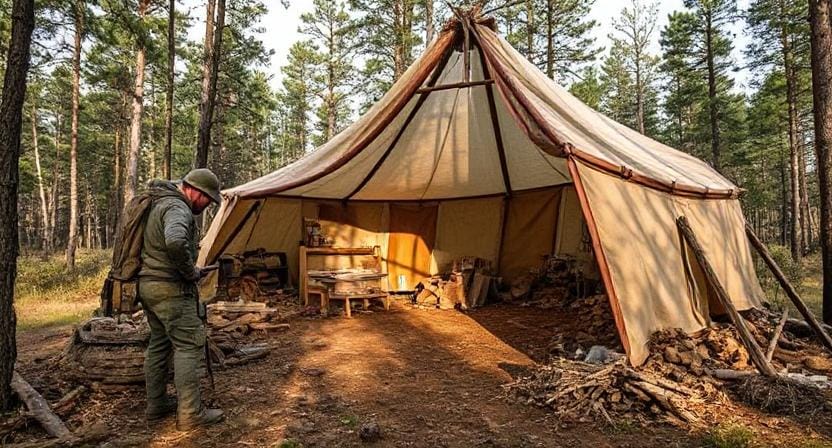
It's time to get your stuff together once you've chosen your premium real estate. Let's see… think about the future! This means using what nature gives you instead of going to Home Depot, which may or may not still be open.
When creating a shelter, wood is generally your best friend. You can make walls or roofs out of fallen branches and logs faster than you can say “Timber!”
When building after the end of the world, remember that strong is better than lovely. When you're fighting to stay alive, looks don't matter. Trust me on this!
You could also look at ways to insulate that are natural. For example, leaves are great at keeping heat in on cold nights, but don't expect them to perform as well as grandma's old quilt!
Straw bales can also help keep your shelter warm and give it that rustic farmhouse look if you want to be adventurous and have a lot of them.
Ways to Build That Work
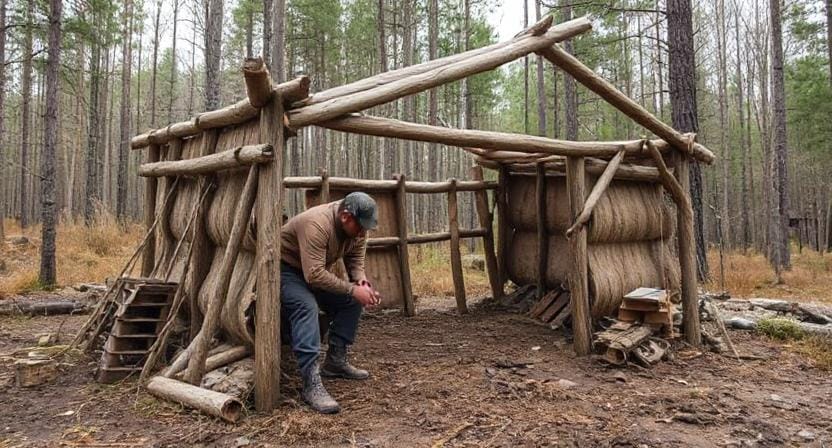
Okay! Let's speak about how to put everything together now that we have our supplies sorted out. We don't want to end up on “Nailed It.”
First of all, build a strong base! This doesn't mean pouring concrete like you're making a tower. Instead, utilize big stones or logs that are lying level on the ground as a base.
The next step is framing, which is the frame of your shelter. The A-frame design is ideal since it keeps water out and is not too hard to build. If you have trees nearby, use them as support beams! (No squirrels were hurt in this process.)
Make sure that each layer fits tightly with the ones below it as you build up and out (like my waistline during quarantine). This is similar to making lasagna sans ricotta cheese and marinara sauce, unless it's part of your plan for the end of the world.
Making Spaces That Work
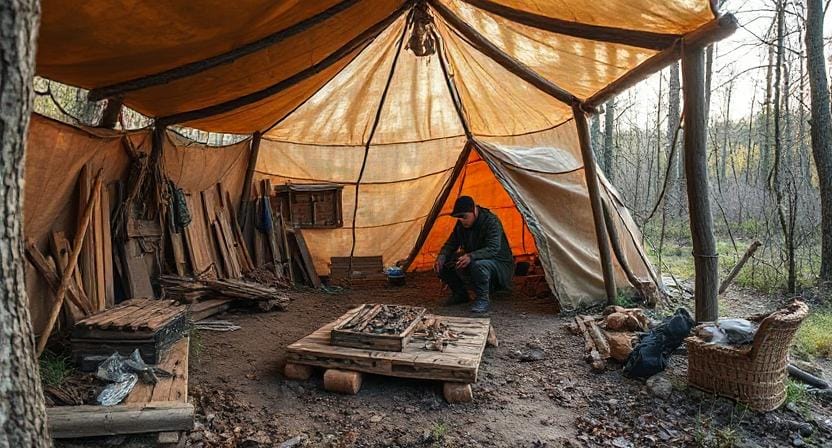
Let's be honest: no one wants their house to seem like a scary movie's abandoned shack—unless that's what you want after all those late-night horror marathons! Functionality is quite important here; think about what areas you'll need in your shelter.
It is important to have a place to sleep because sleeping outside can quickly lead to sunburns, even when you're not on vacation. If you want to be creative, you could make beds out of thick layers of leaves or even platforms out of logs.
Also, think about having a separate area for cooking that isn't near where you'll sleep. This not only keeps bad aromas from coming in at 3 AM, but it also lowers the risk of fire (which is always nice!).
Also, make sure to set aside certain places for food storage. Using sealed containers keeps pests out and keeps food fresher for longer.
Making it Personal
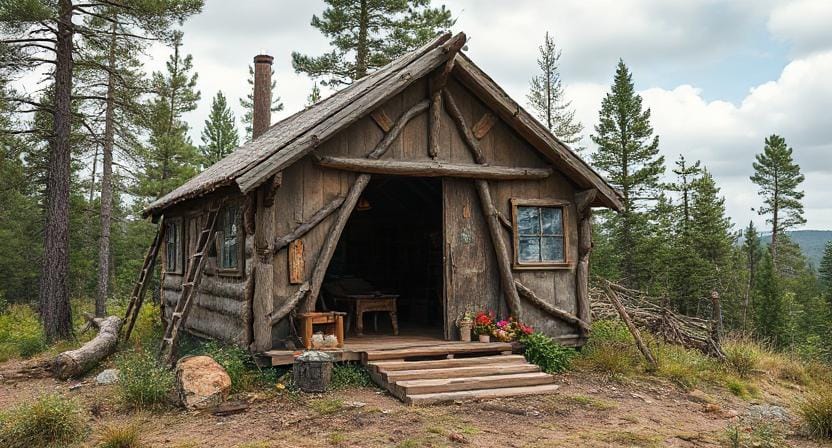
You can still add some personality to your life even while civilization has fallen apart. You might like having something familiar around even in the middle of chaos, even when the world ends.
Start by making decorations out of anything you find, such smooth stones or bright wildflowers. You'd be surprised how much happiness these little things can provide when everything else seems dull.
You might also make small signs to indicate different regions of your home. This will give it more personality and help guests find their way around without getting lost in the furnishings fashioned from fallen branches!
And hey, if you have some free time between fighting zombies or picking berries? Why not give painting a shot? Use natural pigments from plants (or anything you find when you go scavenging) so that each wall tells its own tale. This is a great way to keep from becoming bored!
Making Sure It Lasts For A Long Time
Finally, and most significantly, you need to make sure that your new home will last for a long time, even if bad things happen in the future (such surprise visits from family).
It's important to check for leaks after severe rains or windstorms on a frequent basis because no one likes waking up wet without warning!
If you can, think about using renewable energy sources like solar panels. Just think of how nice it would be to charge your electronics while drinking herbal tea grown right outside!
Even composting trash helps put nutrients back into the soil, which makes gardens better later on. All of these activities are helpful for living sustainably over time.
So there you have it: a funny guide with useful tips that will keep you secure no matter what occurs outside the walls that are sturdy enough to handle anything hurled at them. even reality TV shows that aren't very good that play all the time!
Suggested External Resources:
Building Your Own Off-Grid Cabin
https://www.offgridworld.com/building-your-own-off-grid-cabin/
How To Build an Earthbag Shelter
https://www.motherearthnews.com/diy/earthbag-shelter-zm0z17aszraw
The Ultimate Guide to Natural Building
https://naturalbuildingblog.com/the-ultimate-guide-to-natural-building/

Kevin Collier is a seasoned survivalist and expert in prepping and homesteading, contributing to WiseSurvive.com. With a deep-rooted passion for self-sufficiency and outdoor survival skills, Kevin shares practical advice, strategies, and resources to help individuals prepare for any challenge. His informative articles cover a range of topics, from essential survival techniques to sustainable living practices, empowering readers to thrive in any situation. Whether you're a novice or a seasoned prepper, Kevin's insights will inspire you to take charge of your readiness and build resilience for the future.

